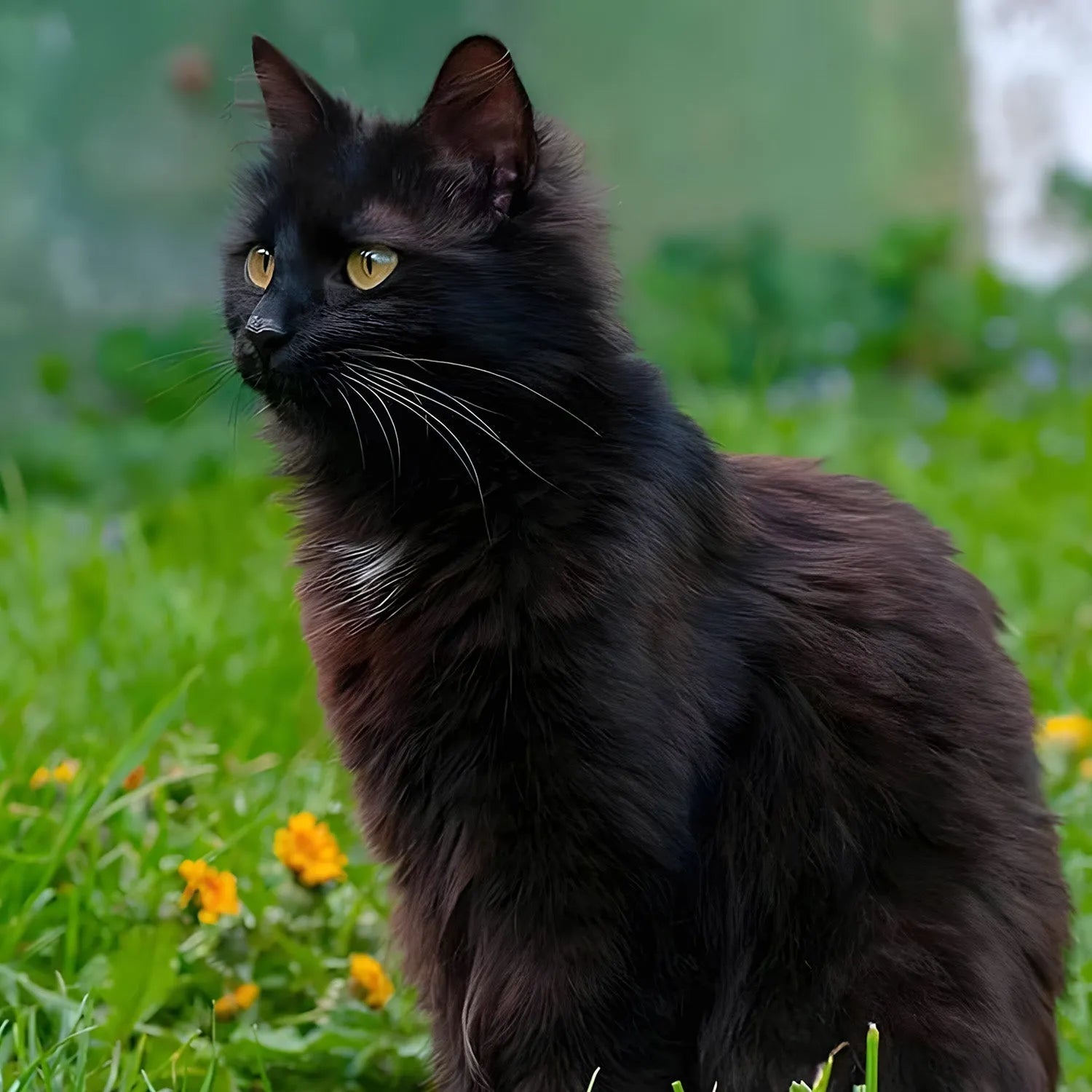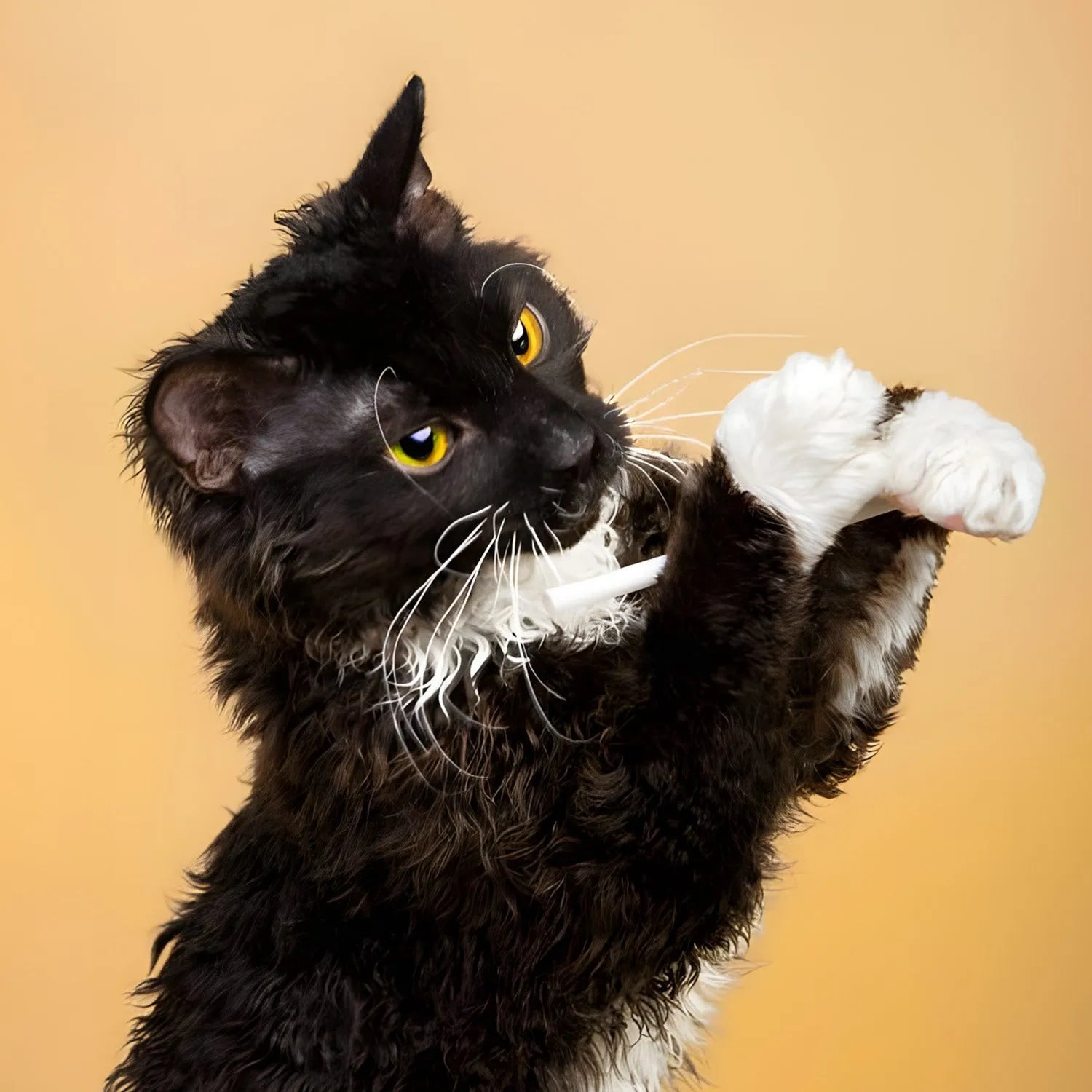Bambino: The Unique and Playful Hairless Cat
Introduction
The Bambino cat is a rare and fascinating breed that stands out due to its hairless body and short legs. A relatively new breed, the Bambino is a result of crossbreeding between the Sphynx and the Munchkin, combining the best traits of both. Known for its playful and affectionate personality, the Bambino is a unique companion that requires special care due to its lack of fur. In this blog, we’ll explore the Bambino’s lifestyle, behavior, grooming needs, trainability, and how it interacts with humans and other pets.
Ratings (1-5)
-
Environmental Adaptability: 3
-
Food Consumption: 3
-
Need for Companionship: 5
-
Trainability: 4
-
Tolerance of Children: 4
-
Ease of Domestication: 4
History and Origins
The Bambino cat breed was first developed in the early 2000s in the United States. The breed is a result of crossbreeding between the hairless Sphynx cat and the short-legged Munchkin cat. The name "Bambino," which means "baby" in Italian, reflects the breed’s small size and its endearing, kitten-like appearance. While the Bambino is not yet widely recognized by all cat registries, it has gained a devoted following among cat enthusiasts who appreciate its unique look and lively personality.
Physical Characteristics and Colors
The most distinctive feature of the Bambino cat is its hairless body, which is a trait inherited from the Sphynx. The lack of fur gives the Bambino a unique and almost alien-like appearance, with its wrinkled skin and large ears. Despite being hairless, the Bambino’s skin can come in a variety of colors and patterns, including solid, tabby, and bicolor. The Bambino’s legs are short, similar to those of the Munchkin, which gives the cat a low-to-the-ground, elongated appearance. Their eyes are large and expressive, often in shades of blue, green, or gold, which adds to their overall charm.
Lifestyle and Behavior
Bambinos are known for their playful and energetic nature. They are highly active cats that enjoy running, jumping, and climbing, despite their short legs. Bambinos are also very social and love to interact with their human companions. They are known for being affectionate and enjoy being close to their owners, often seeking out attention and cuddles. Due to their active nature, Bambinos need plenty of toys and opportunities for play to keep them entertained. They are also known for their curiosity and will often explore every nook and cranny of their environment.
Trainability and Intelligence
Bambinos are intelligent and can be trained to follow basic commands and perform tricks. They are quick learners and respond well to positive reinforcement techniques, such as treats and praise. Bambinos enjoy mental challenges, making them adept at learning new things, whether it's fetching, sitting on command, or even walking on a leash. Their intelligence also makes them highly adaptable to changes in their environment, and they often enjoy learning new routines or exploring new spaces.
Social Behavior and Human Interaction
Bambinos are extremely social and form strong bonds with their human families. They are known for their affectionate nature and enjoy being involved in every aspect of their owner's life. This breed is often happiest when it is in the company of its human companions, and it will follow its owners from room to room. Bambinos are particularly known for their strong need for companionship, and they can become lonely if left alone for long periods. They thrive in homes where someone is usually around to keep them company.
Compatibility with Children and Other Pets
Bambinos are excellent companions for children. Their playful and gentle nature makes them a great match for families. They enjoy interactive play and are generally tolerant of children's antics, provided they are treated with respect. Additionally, Bambinos tend to get along well with other pets, including dogs, as long as they are properly introduced. Their sociable and adaptable nature allows them to integrate well into multi-pet households, and they often enjoy the company of other animals as much as they do humans.
Grooming and Care
Due to their hairless nature, Bambinos require a unique grooming routine compared to other cat breeds. Their skin is prone to accumulating oils and dirt, so regular bathing (typically once a week) is necessary to keep their skin clean and healthy. It's also important to protect Bambinos from extreme temperatures, as their lack of fur makes them more susceptible to both cold and sunburn. In addition to skin care, regular dental care, ear cleaning, and nail trimming are important to maintain their overall health. Bambinos may also need moisturizing products to prevent their skin from becoming too dry.
Health and Lifespan
Bambinos are generally healthy, but their unique physical traits mean they require some special care. Like all cats, they benefit from regular veterinary check-ups and a balanced diet to maintain their health. With proper care, Bambinos can live up to 12-15 years. However, potential health issues include skin conditions due to their hairlessness and joint problems related to their short legs. Regular monitoring and preventive care are important to ensure a long and healthy life for your Bambino.
Environmental Adaptability
Bambinos are adaptable cats that can thrive in various living environments, though they are best suited for indoor living due to their sensitivity to temperature extremes. They are known for their resilience and can adjust well to different climates and household settings, provided they are kept warm and protected. Bambinos are also very active and curious, so they benefit from a stimulating environment with plenty of opportunities for play and exploration.
Feeding Requirements
A balanced diet is crucial for maintaining the Bambino's health and energy levels. High-quality cat food that is rich in protein is recommended. Fresh water should always be available. Due to their lack of fur, Bambinos may have a slightly higher metabolism and may require a bit more food than other cats of a similar size. Consult your veterinarian for specific dietary recommendations based on your cat's age, weight, and health needs.
Conclusion
The Bambino is a unique and playful breed that brings joy and companionship to any household. Their intelligence, affectionate nature, and distinctive appearance make them wonderful pets for families and individuals alike. If you're looking for a cat that combines an unusual look with a loving and sociable personality, the Bambino might be the perfect fit for you.
For more information about other cat breeds and pet care tips, stay tuned to our blog!
References:
-
White, J. (2021). "The Development and Characteristics of the Bambino Cat." *Journal of Feline Studies*, 35(3), 201-215.
-
Richards, A. (2020). "Caring for Your Bambino Cat: A Comprehensive Guide." *Cat Lover's Magazine*, July issue, pp. 30-40.
-
Lee, M. (2019). "Health and Wellness in Bambino Cats." *Veterinary Journal*, 79(2), 123-137.


